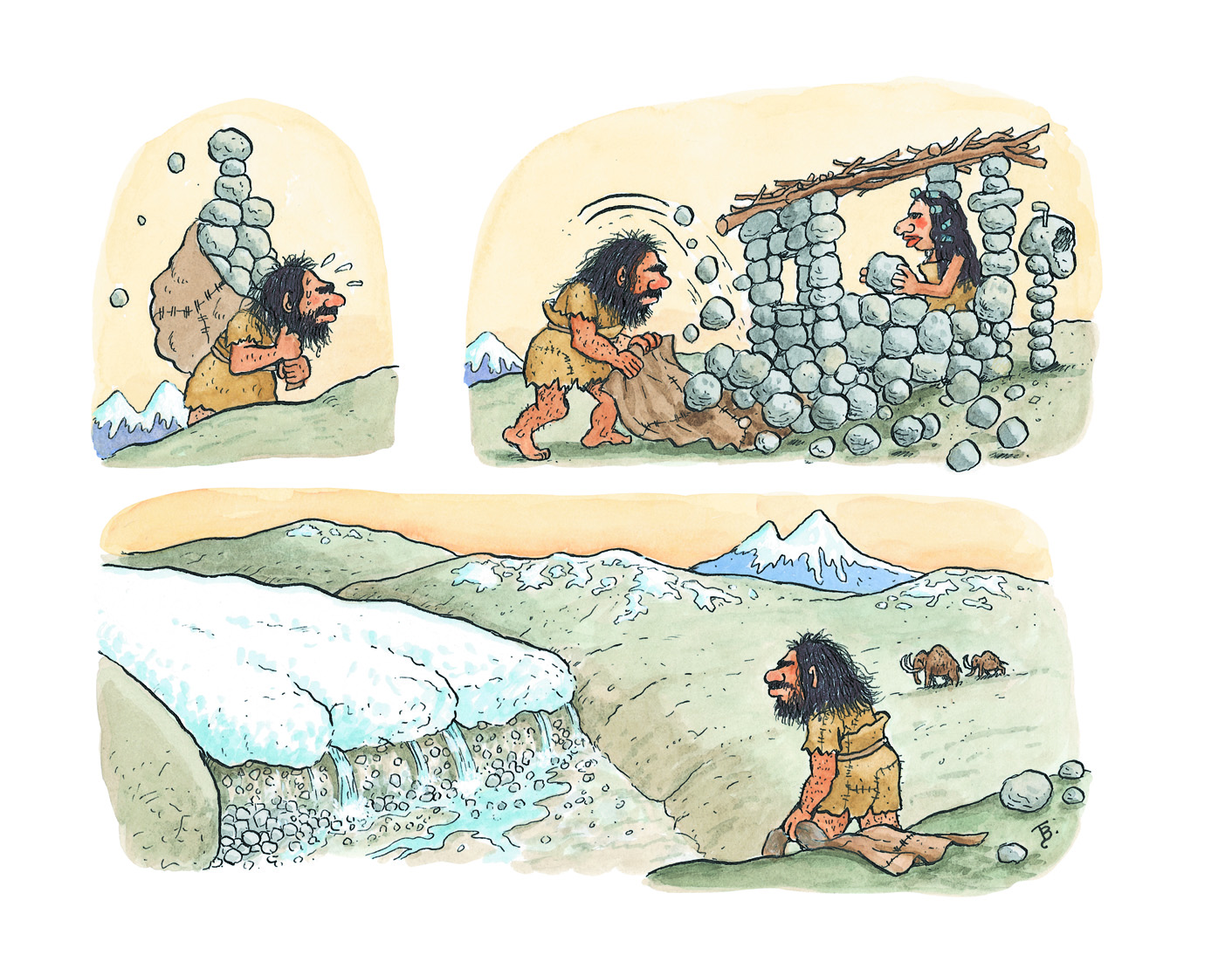
Overview
In this section you will find materials that support the implementation of EarthComm, Section 8: Glaciers and the Landscape.
Learning Outcomes
- Use a quantitative model to describe the factors that affect the volume and movement of a glacier.
- Use a model that illustrates the constructive and destructive processes of a moving valley glacier.
- Use a model that illustrates the effects of glacial meltwater flowing out of a glacier.
- Use a model that illustrates the impact of a glacier moving across a stream channel.
Inquiring Further
- To learn more about J. Harlan Bretz's theory and the evidence behind it, visit the following web sites:
Glacial Lake Missoula and the Missoula Floods, USGS
Overview of Glacial Lake Missoula and the catastrophic floods that formed the Channeled Scablands.
Glacial Lake Missoula and the Ice Age Floods, Montana Natural History Center
Examines the formation of Glacial Lake Missoula and the Missoula floods, including the evidence that demonstrates the occurrence of this geologic event.
Glacial Lake Missoula: Inside an Ice Age Lake, NOVA
Examines why no one has found fossils in Glacial Lake Missoula sediments—no petrified wood, no leaves, no bones.
The Discharge of Glacial Lake Missoula - 20 million m3per second!, USGS
Learn about how a constriction northwest of Portland caused water to back up and reach 120-150 meters high in the Portland basin, flooding 200 km south into Willamette Valley. The pdf of this poster contains excellent photographic evidence of sediments and landforms from the flood.
- To learn more about glacial landforms, visit the following web sites:
Glacial Landforms from Space, NASA
Describes the ice-generated features associated with glaciers in the Himalayan mountain region.
Glaciers and Glacial Landforms, NPS
Information on types of glaciers, their major processes, and the landforms they generate. Also contains useful links to monitoring glaciers and permafrost.
Glossary of Glacier Terminology, USGS
Defines various glacial landforms and provides examples of each
Resources
To learn more about this topic, visit the following web sites:
How Glaciers Form and Move
Glaciers and Glacial Landforms, NPS
Information on types of glaciers, their major processes, and the landforms they generate. Also contains useful links to monitoring glaciers and permafrost.
Glacier Photograph Collection, NSIDC
Over 16,000 images from glacial environments around the world.
Glacier Hazards From Space, PBS
Examines the hazards of glaciers to humans, including ice break-offs, avalanches, and melting ice due to global warming. Uses satellite imagery to help understand concepts.
Bering Glacier – Alaska, NASA
Satellite images of the Bering Glacier in Southern Alaska, the largest glacier in North America. Images show how the glacier has been retreating.
How Glaciers Erode Bedrock and Move Sediment
The Geology of Mount Desert Island, Maine Geological Survey
Overview of glacial erosion, transportation, and deposition processes.
Glacier Meltwater and Its Deposits
Glacial Features, The Crevasse Zone
Provides a series of images that demonstrate the effects and features of glaciers as seen on the Juneau Ice field in Alaska.
How Glaciers Alter River Systems
Pleistocene Glaciers and Geography, University of Wisconsin, Green Bay
Shows the locations of glaciers in the United States and Europe during the last ice age.
Glaciers and Rivers in the Karakoram Mountains, NASA
When valley glaciers surge, it means they flow forward several times faster than usual. Surging glaciers regularly dam rivers and create flood hazards. The floods occur when water pooling up behind the tongue of the advancing glacier suddenly breaks through the natural ice dam and cascades down the gorge.
